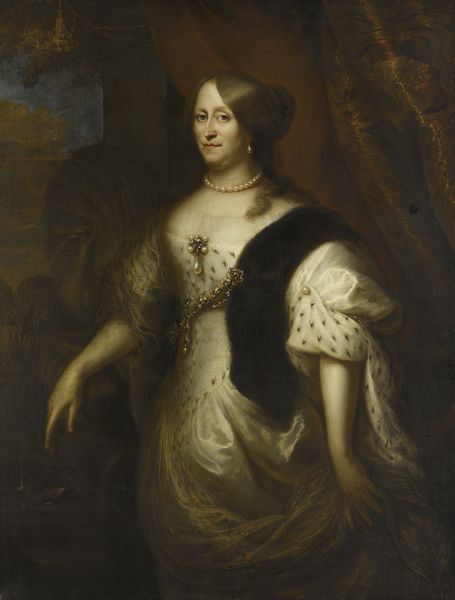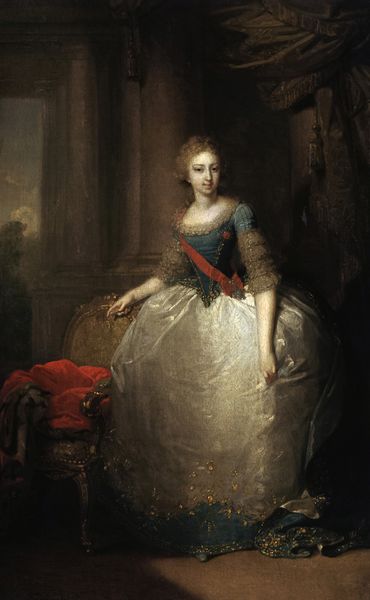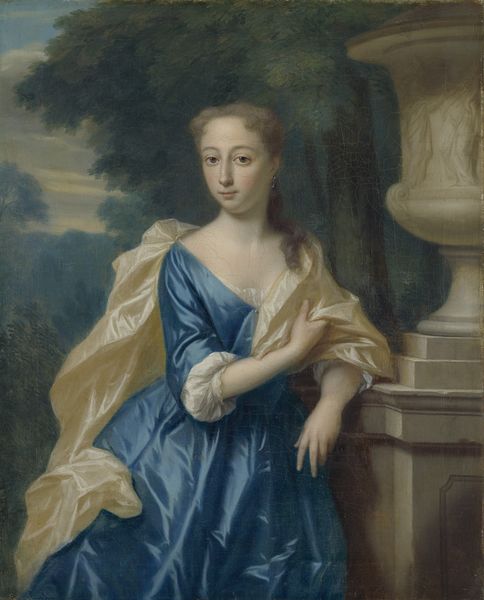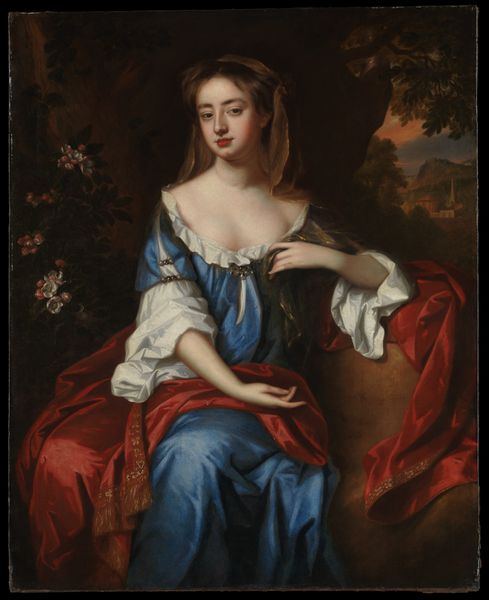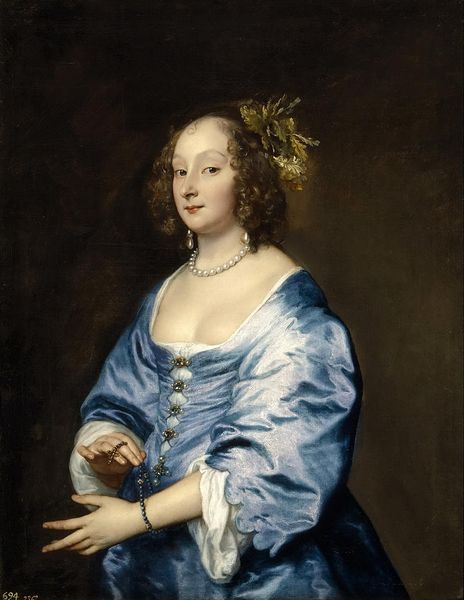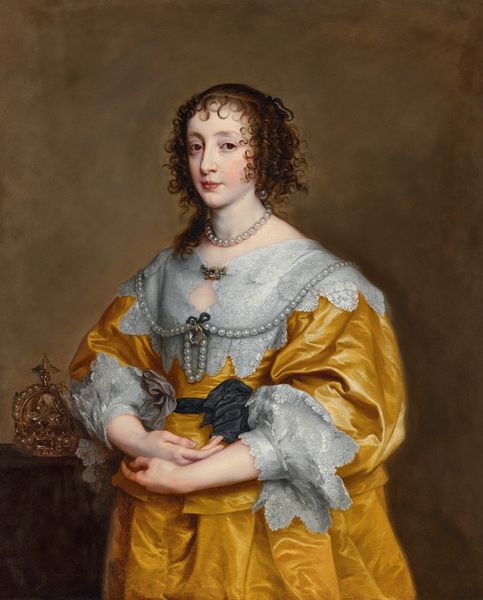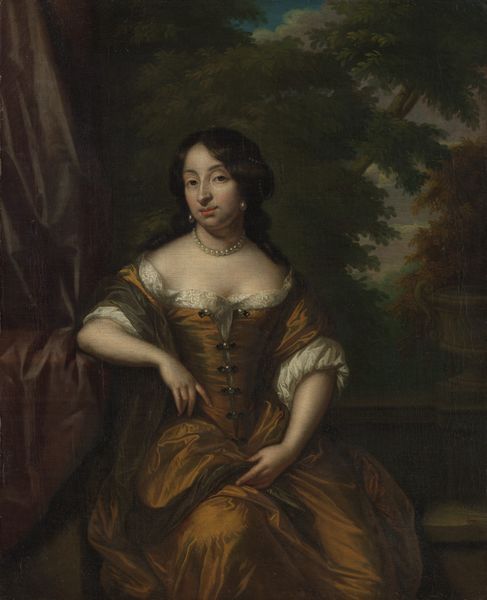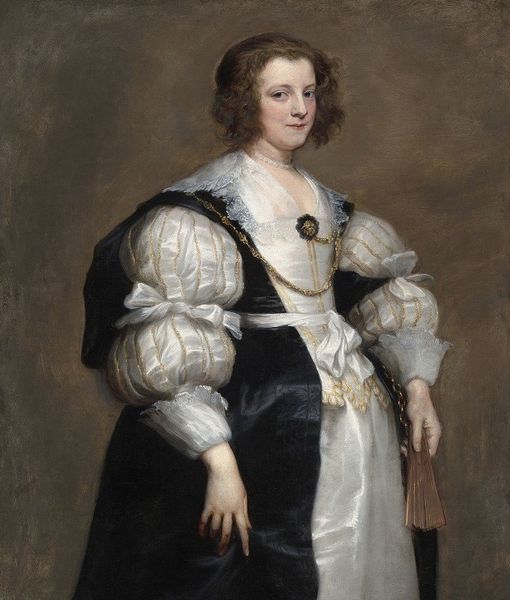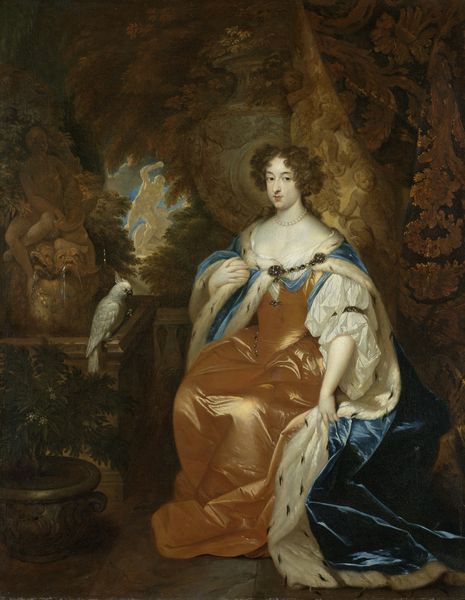
Portrait of Philippina Staunton, Wife of Roelof van Arkel (1632-1709), lord of Broeckhuijsen 1668
0:00
0:00
casparnetscher
Rijksmuseum
painting, oil-paint
#
portrait
#
character portrait
#
baroque
#
dutch-golden-age
#
painting
#
oil-paint
#
figuration
#
genre-painting
#
history-painting
Dimensions: height 87 cm, width 69 cm, depth 8.5 cm
Copyright: Rijks Museum: Open Domain
Curator: Caspar Netscher's "Portrait of Philippina Staunton," painted in 1668, presents us with a fascinating study of status and materiality. Editor: Indeed. My first impression is one of luminosity; the shimmering quality of the fabric seems to almost pulse with light, contrasted by a theatrical dark backdrop. Curator: The cascading gown certainly commands attention. It begs consideration: where did this material come from? Silks like this were luxury goods. The detail here exemplifies Netscher's famed skill, don't you think? Editor: Unquestionably, yes! Netscher's talent lay in realistically capturing such textures and their interactions with light, to make you believe in the actual fabric itself. These details would signify status; her pearls and luxurious gown representing both her position and her husband’s power. Considering the immense labor invested in the silk production, we are made to consider more deeply her elevated position in society. Curator: Precisely. Beyond its aesthetic appeal, though, observe the pose and backdrop. She stands beside architectural fragments; the column and plinth frame her as a figure of importance. What do you make of that placement? Editor: These were stock devices. They operate as purely pictorial, not psychological prompts. One understands she's meant to seem grand, as befitting her station. They operate semiotically within a symbolic lexicon; their function to signify nobility and elevated social standing is overt. What are your thoughts on Netscher's style? Curator: Netscher adapted elements of the French refined style of portraiture while firmly planting his artistry within the traditions of the Dutch Golden Age. This artwork acts almost like a display of societal norms—material display in painting at its very best. It creates an incredible image and composition that demands further semiotic interpretations. Editor: Well said! Reflecting on "Philippina Staunton", it has become very clear how crucial it is to remember that the making and ownership of art speaks of something profound within a class context. Curator: Absolutely. Thank you for elucidating those key perspectives with me, highlighting the significance of labor and class in art!
Comments
No comments
Be the first to comment and join the conversation on the ultimate creative platform.
